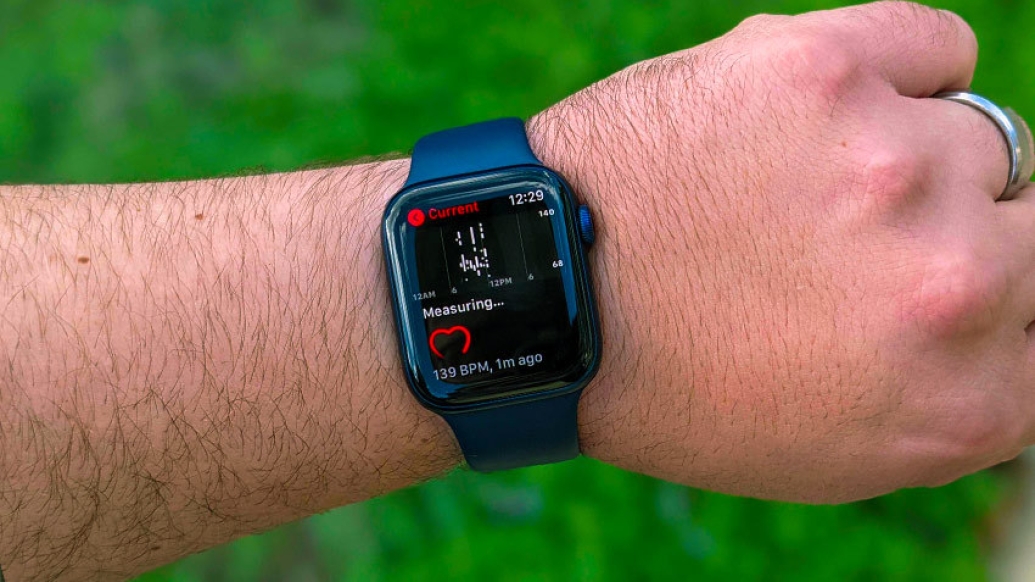Participants from the University of Michigan Health-led study range in age, race and health conditions.
9:28 AM
Author |

Researchers in the health and wellness space have typically relied on people to report their personal health data, like activity levels, heart rate or blood pressure, during brief snapshots in time.
Wearable health devices, such as the popular Apple Watch, have changed the game, surfacing meaningful data that can paint a more complete picture of daily life and resulting health and disease for clinicians.
Early results from a landmark, three-year observational study called MIPACT, short for Michigan Predictive Activity & Clinical Trajectories, provide insight into the baseline health status of a representative group of thousands of people, as reported in a paper published in The Lancet Digital Health.
"From both a research and clinical standpoint, as we design digital health interventions or make recommendations for our patients, it's important to understand patients' baseline activity levels," said Jessica Golbus, M.D., of University of Michigan Health's Division of Cardiovascular Medicine, and co-investigator on the study.
The University of Michigan Health study is led by Sachin Kheterpal M.D., the associate dean for Research Information Technology and professor of Anesthesiology and launched in 2018 as a collaboration with Apple. The study aims to enroll a diverse set of participants across a range of ages, races, ethnicities and underlying health conditions.
Golbus notes that one of the biggest successes of the study so far was their ability to recruit from groups that have largely been underrepresented or unrepresented in digital health research. For example, 18% of the more than 6,700 participants were 65 or older, 17% were Black, and 17% were Asian.
MORE FROM THE LAB: Subscribe to our weekly newsletter
Ten percent of participants had diabetes and a third had hypertension. More than a quarter of participants reported depression. Summary data from the MIPACT study across participants is available in a web-based research tool that was developed by the study investigators.
"With this tool, researchers and participants can choose certain clinical and demographic criteria—age, body mass index, sex —and see not only how many participants fall into that cohort but their average resting heart rate, blood pressure, and other activity data," said Nicole Eyrich, clinical research project manager for the study. "It provides more context in the form of normative data for researchers."
The data is a potential game-changer for clinicians.
"As a cardiologist who takes care of patients dealing with heart failure, it's important that more than 200 patients in our study have heart failure. Understanding what their baseline information looks like is going to be really informative and allow us to start with more accurate estimates of patients' activity levels in daily life," Golbus said.
The paper examines the first 90 days of the study, describing heart rate and activity data collected with the Apple Watch or iPhone and blood pressure measurements collected with the Omron wireless blood pressure cuff.
Participants wore their Apple Watch on almost 90 percent of the study days for an average of 15.5 hours a day. Overall, more than 200 million heart rate measurements were collected with Apple Watch and 1.1 million blood pressure readings with the Omron blood pressure cuff.
Participants 65 and older had significantly lower resting and walking heart rates, and women had resting heart rates on average 3 beats per minute higher than men. When stratified by self-declared race, Black participants had the highest heart rates and white participants the lowest. Activity levels also varied by race and ethnicity and by the presence of certain clinical conditions. Together, these differences demonstrate that patient-specific context is an important consideration when clinicians interpret wearable and home blood pressure data.
From a technology standpoint, the study also revealed a significant discrepancy in activity levels as measured by the watch and phone, with the latter underestimating step counts.
Said Golbus, "I think what this means is that not all mobile device signals are created equal and that, in the future, interpretation of these signals will require knowledge of the device from which these signals were collected."
Golbus adds that the ultimate results of the study will be important clinically for physicians.
"Pretty frequently, I get asked by my patients what their wearable device data means, and it's really challenging to understand its implications for their long-term health," said Golbus. She notes that the three-year follow-up period will be most informative as they seek to contextualize the data signals from the Apple Watch with information from participants' electronic medical records and survey data.
The data may also provide the unexpected ability to examine the effects of the COVID-19 pandemic. Said Golbus, "We have data on participants both before and after the onset of the pandemic, so we really have the capability to evaluate how physiologic parameters changed over the course of the pandemic both as a result of illness but also due the global impact the pandemic has had on all of our lifestyles."
About MIPACT
MIPACT is built upon experience gained from the enrollment of 60,000 participants over the last six years of the Michigan Genomics Initiative, part of Precision Health at the University of Michigan, as well as the infrastructure of the Michigan Institute for Clinical & Health Research.
Find more information on MIPACT.
Paper cited: "Wearable device signals and home blood pressure data across age, sex, race, ethnicity, and clinical phenotypes in the Michigan Predictive Activity & Clinical Trajectories in Health (MIPACT) study: a prospective, community-based observational study," The Lancet Digital Health. DOI: 10.1016/S2589-7500(21)00138-2
Like Podcasts? Add the Michigan Medicine News Break on iTunes, Google Podcasts or anywhere you listen to podcasts.

Explore a variety of healthcare news & stories by visiting the Health Lab home page for more articles.

Department of Communication at Michigan Medicine
Want top health & research news weekly? Sign up for Health Lab’s newsletters today!





